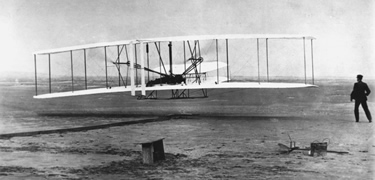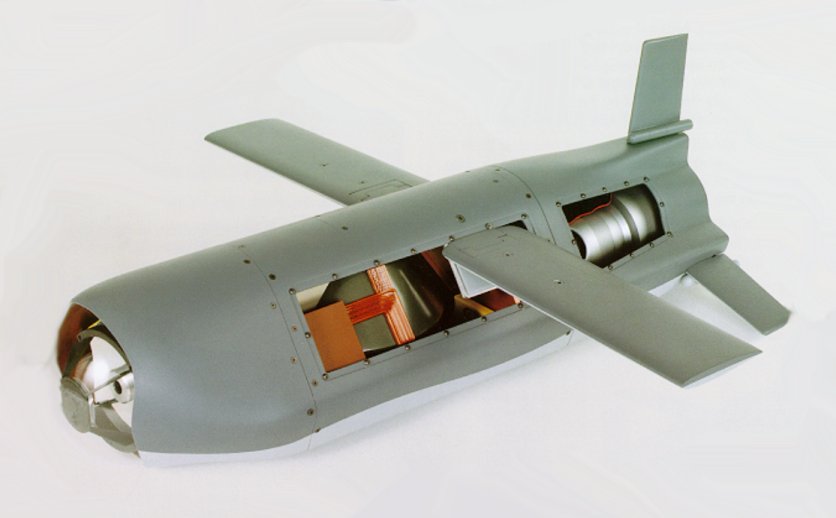

 The Accurate Reloading Forums
The Accurate Reloading Forums  THE ACCURATE RELOADING.COM FORUMS
THE ACCURATE RELOADING.COM FORUMS  Other Topics
Other Topics  Aviation
Aviation  Drones Becoming the Weapon of Choice
Drones Becoming the Weapon of ChoiceGo  | New  | Find  | Notify  | Tools  | Reply  |  |
one of us |
March 17, 2009 (New York Times) Drones Are Weapons of Choice in Fighting Qaeda By CHRISTOPHER DREW A missile fired by an American drone killed at least four people late Sunday at the house of a militant commander in northwest Pakistan, the latest use of what intelligence officials have called their most effective weapon against Al Qaeda. And Pentagon officials say the remotely piloted planes, which can beam back live video for up to 22 hours, have done more than any other weapons system to track down insurgents and save American lives in Iraq. The planes have become one of the military's favorite weapons despite many shortcomings resulting from the rush to get them into the field. An explosion in demand for the drones is contributing to new thinking inside the Pentagon about how to develop and deploy new weapons systems. Air Force officials acknowledge that more than a third of their unmanned Predator spy planes - which are 27 feet long, powered by a high-performance snowmobile engine, and cost $4.5 million apiece - have crashed, mostly in Iraq and Afghanistan. Pilots, who fly them from trailers halfway around the world using joysticks and computer screens, say some of the controls are clunky. For example, the missile-firing button sits dangerously close to the switch that shuts off the plane's engines. Pilots are also in such short supply that the service recently put out a call for retirees to help. But military leaders say they can easily live with all that. Since the height of the cold war, the military has tended to chase the boldest and most technologically advanced solution to every threat, leading to long delays and cost overruns that result in rarely used fighter jets that cost $143 million apiece, and plans for a $3 billion destroyer that the Navy says it can no longer afford. Now the Pentagon appears to be warming up to Voltaire's saying, "The perfect is the enemy of the good." In speeches, Defense Secretary Robert M. Gates has urged his weapons buyers to rush out "75 percent solutions over a period of months" rather than waiting for "gold-plated" solutions. And as the Obama administration prepares its first budget, officials say they plan to free up more money for simpler systems like drones that can pay dividends now, especially as fighting intensifies in Afghanistan and Pakistan. A rare behind-the-scenes look at the use of the Predator shows both the difficulties and the rewards in pushing out weapons more quickly. "I'll be really candid," said Col. Eric Mathewson, who directs the Air Force's task force on unmanned aerial systems. "We're on the ragged edge." He said the service has been scrambling to train more pilots, who fly the drones via satellite links from the western United States, to keep up with a near-tripling of daily missions in the last two years. Field commanders in Iraq and Afghanistan, where the Air Force is in charge of the Predators, say their ability to linger over an area for hours, streaming instant video warnings of insurgent activity, has been crucial to reducing threats from roadside bombs and identifying terrorist compounds. The C.I.A. is in charge of drone flights in Pakistan, where more than three dozen missiles strikes have been launched against Al Qaeda and Taliban leaders in recent months. Considered a novelty a few years ago, the Air Force's fleet has grown to 195 Predators and 28 Reapers, a new and more heavily armed cousin of the Predator. Both models are made by General Atomics, a contractor based in San Diego. Including drones that the Army has used to counter roadside bombs and tiny hand-launched models that can help soldiers to peer past the next hill or building, the total number of military drones has soared to 5,500, from 167 in 2001. The urgent need for more drones has meant bypassing usual procedures. Some of the 70 Predator crashes, for example, stemmed from decisions to deploy the planes before they had completed testing and to hold off replacing control stations to avoid interrupting the supply of intelligence. "The context was to do just the absolute minimum needed to sustain the fight now, and accept the risks, while making fixes as you go along," Colonel Mathewson said. It is easier, of course, for the military to take more risks with unmanned planes. Complaints about civilian casualties, particularly from strikes in Pakistan, have stirred some concerns among human rights advocates. Military officials say the ability of drones to observe targets for lengthy periods makes strikes more accurate. They also said they do not fire if they think civilians are nearby. The Predators were still undergoing basic testing when they were rushed into use in Bosnia and Kosovo in the 1990s and then hastily armed with missiles after the September 2001 terrorist attacks. But it was only after the military turned to new counterinsurgency techniques in early 2007, that demand for drones became almost insatiable. Since then, Air Force Lt. Gen. Gary North, the air-component commander for the combined forces in Iraq and Afghanistan, said the service has gone to "amazing lengths" to increase their use. The Predators and Reapers are now flying 34 surveillance patrols each day in Iraq and Afghanistan, up from 12 in 2006. They are also transmitting 16,000 hours of video each month, some of it directly to troops on the ground. The strains of these growing demands were evident on a recent visit to Davis-Monthan Air Force Base in Tucson, Ariz., one of four bases where Air National Guard units have been ordered to full-time duty to help alleviate crew shortages. The Guard members, along with Air Force crews at a base in the Nevada desert, are 7,000 to 8,000 miles away from the planes they are flying. Most of the crews sit at 1990s-style computer banks filled with screens, inside dimly lit trailers. Many fly missions in both Iraq and Afghanistan on the same day. On a recent day, at 1:15 p.m. in Tucson - 1:15 the next morning in Afghanistan - a pilot and sensor operator were staring at gray-toned video from the Predator's infrared camera, which can make even the darkest night scene surprisingly clear. The crew was scanning a road, looking for - but not finding - signs of anyone planting improvised explosive devices or lying in wait for a convoy. As the Predator circled at 16,000 feet, the dark band of a river and craggy hills came into view, along with ribbons of farmland. "We spend 70 to 80 percent of our time doing this, just scanning roads," said the pilot, Matthew Morrison. At other times, the crews monitor insurgent compounds and watch over troops in battle. "When you're on the radio with a guy on the ground, and he is out of breath and you can hear the weapons fire in the background, you are every bit as engaged as if you were actually there," Major Morrison said. When Predators spot possible targets, officers monitoring video at command centers in Iraq and Afghanistan decide whether to order an attack. Col. Gregg A. Davies, commander of the group that flies Predators for the Arizona Guard, said fighter planes with bigger bombs are often sent in to make the strikes. In all, the Air Force says, Predators and Reapers shot missiles on 244 of the 10,949 missions in Iraq and Afghanistan in 2007 and 2008. Air Force officials said a few crew members have had a difficult time watching the strikes. And some pilots said it can be hard to transition from being a computer-screen warrior to dinner at home or their children's soccer games. Another problem has been that few pilots wanted to give up flying fighter jets to operate drones. Given the shortages, the Air Force has temporarily blocked transfers out of the program. It also has begun training officers as drone pilots who have had little or no experience flying conventional planes. Colonel Mathewson, director of the Air Force's task force on unmanned aerial systems, said that while upgrades have been made to control stations, the service plans to eventually shift to simpler and more intuitive ground systems that could allow one remote pilot to control several drones. Now, pilots say, it takes up to 17 steps - including entering data into pull-down windows - to fire a missile. And even though 13 of the 70 Predator crashes have occurred over the last 18 months, officials said the accident rate has fallen as flying hours have shot up. All told, 55 have been lost because of equipment failure, operator errors or weather. Four were shot down in Bosnia, Kosovo and Iraq; 11 were lost in combat situations, like running out of fuel while protecting troops under fire. Given the demand for video intelligence, the Air Force is equipping 50 manned turbo-prop planes with similar cameras. And it is developing new camera systems for Reapers that could vastly expand the intelligence each plane can collect. P. W. Singer, a defense analyst at the Brookings Institution says the Predators have already had "an incredible effect," though the remote control raised obvious questions about whether the military could become "more cavalier" about using force. Still, he said, "these systems today are very much Model T Fords. These things will only get more advanced." NRA Life Member, Band of Bubbas Charter Member, PGCA, DRSS. Shoot & hunt with vintage classics. | ||
|
| One of Us |
This is a photo of the windflags that I sell to the military to help in launching the drones.  Butch www.shadetreeea.com | |||
|
| One of Us |
I wonder how long it'll be before we have a drone "ace" - five air-to-air kills. It'll probably come from the country with the best trained Nintendo "pilots" at no matter what age. Even my 10 year old son can best me in "aerial dueling". I think within the next generation they may see the end of manned combat aircraft and the exclusive use of remote-controlled aircraft. Namibiahunter  . | |||
|
| one of us |
Someone was telling me about a conversation about RPVs involving a AF type one star. The one star said of the RPVs . . . "they are just a passing fad" . . . Scary to think that level of ignorance exists at that level. Some out there are doubting Thomas' . . . Just because they cannot not fathom the ignorance of some. I have been wondering how long it will be before one of the RPVs are involved in a mid-air. Don't limit your challenges . . . Challenge your limits | |||
|
| One of Us |
Syracuse (Hancock Field) is going to be the first domestic deployment of the MQ-9 Reaper. Replacing the current F-16 squadron here. It has been set back over and over due to the fact there are NO FAA reg's for UAV's and not much in the way of infrastructure in place to work with. Certainly something to keep abreast of. I would be surprised if ANYONE doubted the value of a UAV. One last thought... Current ROE include seeing the enemy. no engagement Beyond Visual Range (BVR) for Air to Air. I'm wondering how that will include the ultra high power stabilized cameras in UAV's Collins | |||
|
| one of us |
The have a new Missile for them, it weights about 10 lbs. In few months they will be able to take more shots than they do now. two or three Hell fire missiles , to 10 to 12 of these new ones. They call it the Spike. | |||
|
| One of Us |
http://www.army-technology.com/projects/gill/ Looks pretty cool, but I like this one... http://www.fas.org/man/dod-101/sys/smart/locaas.htm the b2 can carry 193 of them. Toaster sized autonomous cruise missiles.  | |||
|
| one of us |
http://blog.wired.com/defense/.../army-tests-new.html Next will be this sniper drone !Only ".338" is mentioned but I assume .338 Lapua. The system could be used on other types of drone. | |||
|
| one of us |
Its something else, a short 10 years ago it was just an I spy with my little eye and now they target just about anything. And the pilot sits in an Air Conditioned office. The new little cruse missile is something else, they talk to each other and fly in packs. Its going to be hell to be in any kind of Armor formation, if you don't own the sky. It already is, if you are not sitting in an Allied tank. | |||
|
| One of Us |
LOCAAS: At $33,000 each, I hope they hit some really good, high-value targets... | |||
|
| Powered by Social Strata |
| Please Wait. Your request is being processed... |
|
 The Accurate Reloading Forums
The Accurate Reloading Forums  THE ACCURATE RELOADING.COM FORUMS
THE ACCURATE RELOADING.COM FORUMS  Other Topics
Other Topics  Aviation
Aviation  Drones Becoming the Weapon of Choice
Drones Becoming the Weapon of Choice

Visit our on-line store for AR Memorabilia

